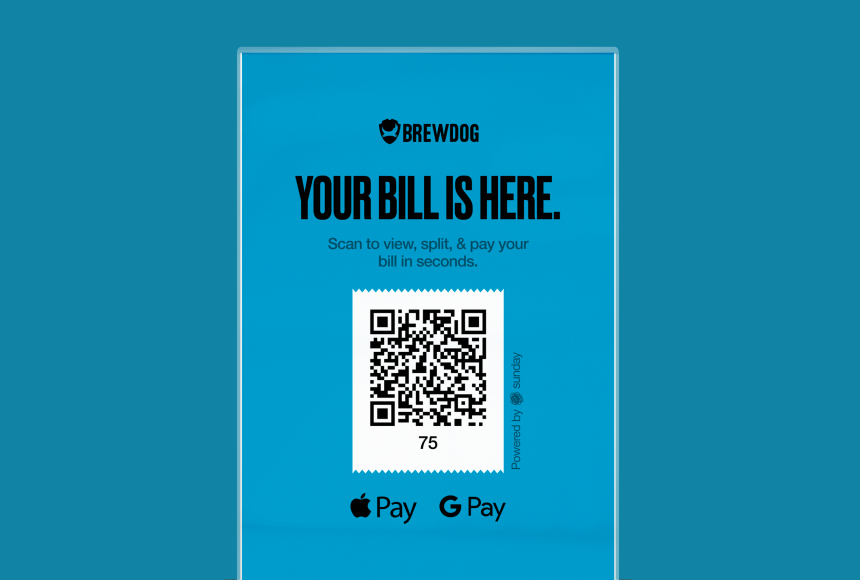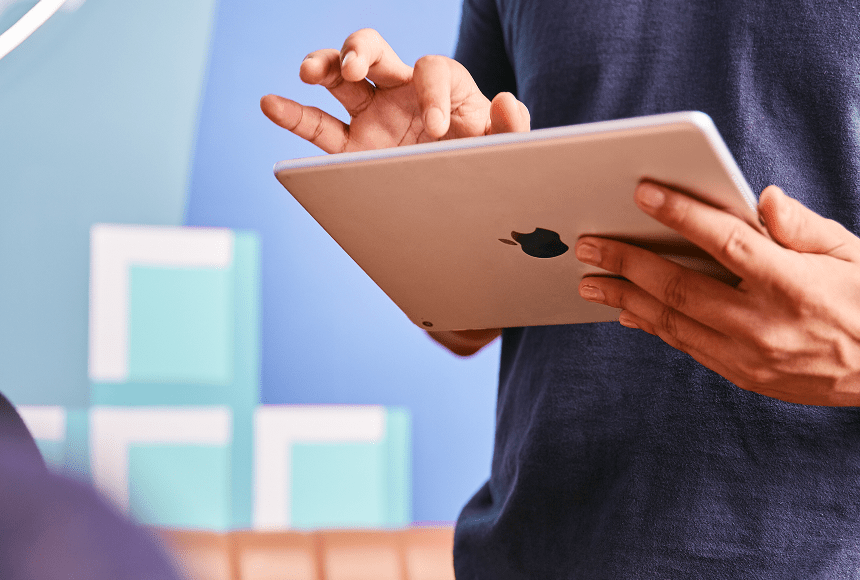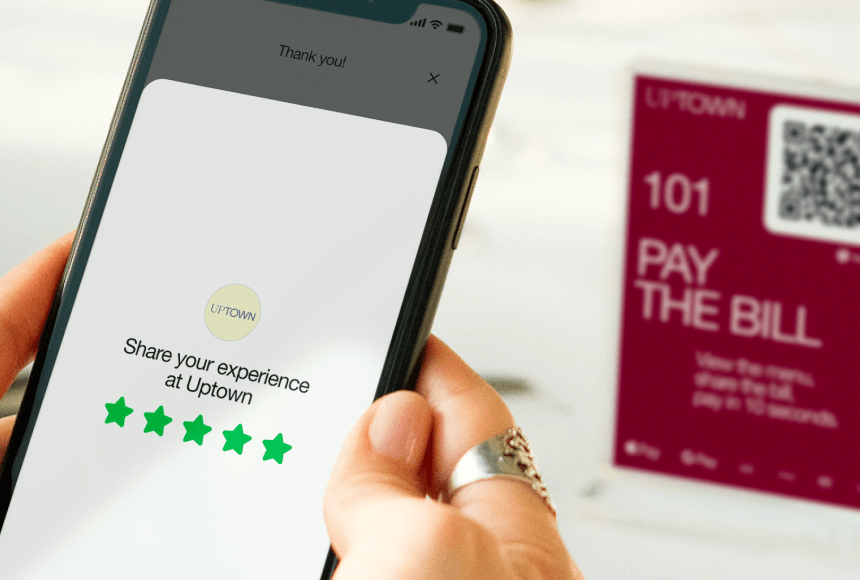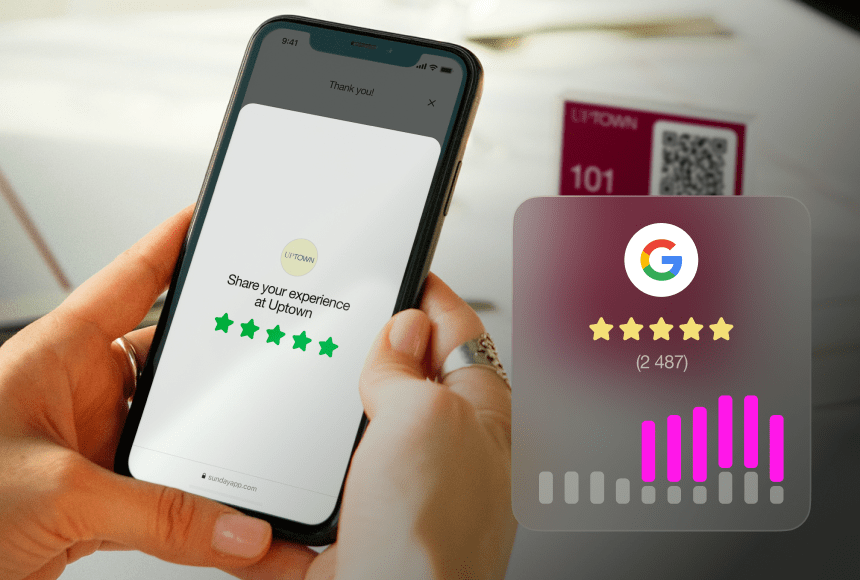
Faster Checkouts, Happier Guests: Why QR Codes Are Transforming the Payment Experience
The New Era of Convenience in Restaurant Payments
Payment processes in restaurants are evolving at lightning speed. Gone are the days when servers would drop off a paper bill and wait for guests to fish out their cards, only to return later with a receipt and pen. This traditional back-and-forth can eat up precious minutes during busy shifts—time that could be used to serve new customers, expedite orders, or simply provide better attention to the next table. Today, QR codes on the bill promise an immediate, fuss-free payment method that directly addresses these inefficiencies.
While smartphones and contactless payments are nothing new, the idea of incorporating a quick-response code on the guest’s check has become an innovative way to reduce friction and enhance the dining experience. Guests simply scan the code to pay—right from their phones. No more waiting on the card reader, no more extra tableside visits, and no more rummaging for loose cash. This instant, user-friendly approach matters more than ever, especially in the United States, where diners expect technology to streamline nearly every aspect of their daily lives.
Beyond speed, restaurants that adopt QR code payments are seeing a positive ripple effect on guest satisfaction, table turnover, and even the tip line. For owners and managers, the message is clear: making payments easier pays off in more than one way.
How a Restaurant Payment “Traffic Jam” Impacts Your Bottom Line
Imagine a jam-packed weekend brunch service. Your host stand is bustling with hungry patrons, the kitchen staff is already feeling overworked, and tables are turning slower than you’d like. Waiting for guests to settle the bill can extend table engagement times by several minutes—or in the worst cases, even longer.
The problem isn’t always a single holding point. It’s often a sequence of smaller delays. For instance:
- The server must deliver the bill.
- They leave to attend another table, only to return later for the card or cash.
- If guests want to split the check, the server must manually process multiple payments.
- Waiting for the printed receipts or re-checking the total can lead to additional steps.
These extra minutes add up significantly. According to restaurant industry insights from organizations like the National Restaurant Association, streamlining the payment process can improve table turnover rates by 10% or more. That’s a considerable margin when you consider how each additional turnover means an entirely new group of paying diners. Faster table turnover channels directly into higher revenue—especially important for restaurants in high-rent, high-traffic areas where every minute counts.
The Core Benefits of QR Codes on the Guest’s Bill
While the entire dining experience is important—our atmosphere, our staff interactions, and our menu—studies show that the pay-at-table moment can be a significant pain point. By printing a QR code right on the guest’s bill, you shave off this friction. Let’s break down why QR codes provide a tangible advantage.
1. Speedier Table Turnover
When guests don’t have to wait for the payment terminal or the server’s repeated visits, their checkout process is substantially quicker. With a simple scan, they can see the total, tip as they choose, and pay instantly. For a high-volume restaurant juggling multiple seatings, those saved minutes can mean one or two additional table turns during peak periods.
2. Enhanced Guest Satisfaction
Long ago, restaurants prided themselves on staff that could “read the room,” providing friendly and efficient service. In today’s digital age, efficiency is one more dimension of hospitality. A quick, painless checkout feels respectful of the guest’s time. Diners notice—and appreciate—when you let them go about their day without friction or awkward waiting times.
3. Greater Staff Productivity
Servers often juggle too many tasks, especially during peak hours. When you deploy QR codes, you free them to focus on quality interactions rather than mechanical ones. This means spending more time suggesting desserts or checking on diners’ satisfaction, rather than waiting in line for the card reader. Productivity gains can reduce labor costs or allow you to use staff more strategically. Fewer trips back and forth between the POS terminal and the table can accumulate into substantial time savings over the course of a full shift.
4. Boosted Tips
Interestingly, many restaurants report that guests who settle their bills via phone-based systems are often more generous tippers. Why? First, the streamlined process feels more modern and pleasant. Second, digital interfaces often use suggested tip percentages that gently encourage diners to leave a fair—or even slightly larger—gratuity. In busy restaurants or among younger, tech-savvy diners, these suggestions translate into higher tip averages than the old-school tip line on a printed receipt.
Why QR Codes Resonate in the US Restaurant Market
The cultural landscape in the United States is prime for QR code adoption. Americans largely embrace digital convenience—from online shopping, to app-based grocery delivery, to ride-sharing. The popularity of cashless transactions means guests are pretty comfortable with scanning a quick link to complete everyday purchases.
Moreover, safety concerns that arose in recent years pushed contactless solutions to the forefront of the industry. According to research compiled by PYMNTS.com, contactless and digital transactions in the restaurant space have skyrocketed—signaling a shift in consumer expectations that is unlikely to retreat. In fact, digital-savvy guests increasingly expect frictionless technology options in all service environments, and restaurants are no exception.
That said, adopting new technology can sometimes ruffle feathers. Restaurants with older clientele or with a reputation built on traditional service might worry that transitioning to QR codes will feel impersonal. But the key lies in how you present it. By emphasizing convenience and still maintaining friendly, attentive service, a QR code approach can delight diners across demographics.
Anchoring a Better Guest Experience with a Tasty Metaphor
Let’s compare the payment process to a multi-course meal. For many restaurants, building a perfect start—to the amuse-bouche or the appetizer—is second nature. Yet the final course, the payment moment, is often underappreciated. Just as a dessert that’s too sweet or too rushed can overshadow a perfectly cooked main course, a drawn-out checkout can tarnish an otherwise memorable dining experience. QR codes on the bill help ensure that your “last course” goes off without a hitch—light, quick, and exactly what your guest wants.
By minimizing the manual back-and-forth, you keep the entire “meal” balanced. The staff are your skilled sous-chefs, focusing on meal execution and hospitality, not chasing down payment terminals. Meanwhile, your patrons have more control over their time, which is a sweet finale to their experience. The payoff is a recurring cycle of positive reviews, loyal customers, and a growing bottom line.
Practical Steps to Implement QR Code Payments
Ready to integrate QR codes into your checks? Below is a practical roadmap to get you going:
- Choose a QR code payment solution. Look for providers specializing in point-of-sale integrations, ensuring your system can seamlessly reconcile the final totals with your existing setup. Some solutions, such as sunday, allow the guest to scan, pay, tip, and even leave a Google review—all in a single flow.
- Train your staff. Introduce the platform to your team before rolling it out to guests. Servers should know how the system works, what the guest sees on their phone, and how to assist if questions come up.
- Promote it smartly. Table tents or a quick mention from your servers can help diners understand they can pay via a simple scan. Be sure your printed checks clearly display the QR code with a brief call-to-action, like “Scan to Pay Instantly.”
- Consider personalized branding. Incorporate your restaurant’s logo, special promotions, or a custom message on the payment page. This can provide a more seamless brand experience.
- Test and refine. Gather feedback from staff and guests. Are any steps confusing? Is the tip-setting feature too hidden? Use that real-world feedback to tweak the system.
Done well, QR codes can add a breath of fresh air to how you handle payments. The new system should be easy, quick, and—most importantly—beneficial to both your operational flow and your guests’ ease of experience.
A Closer Look: Dining at “The Green Spoon” Case Study
Let’s paint a picture of how this might look in a typical mid-sized restaurant setting. “The Green Spoon,” a farm-to-table bistro in a bustling urban neighborhood, serves about 120 covers per day. Its management often faces logjams during lunch and dinner rushes, brought on by slow payment processes that stall table turnover. Here’s how adopting QR codes made a difference:
- Before QR Codes: During peak lunch hours, The Green Spoon’s servers found themselves waiting in line at the payment terminal or rummaging for the correct card reader. When multiple tables asked for the check at the same time, the place got congested. Their typical lunch service turnover time was around 60 minutes per table.
- After QR Codes: Within a week of introducing QR codes on the bill, staff noticed diners finishing up and paying sooner—by an average of five to eight minutes. During busy hours, that freed up tables for new arrivals sooner, improving overall flow. Plus, tips jumped by about 15% on average, likely due to the easy tipping prompts right on the guest’s phone.
- Bottom-Line Impact: With that improved turnover rate, The Green Spoon was able to seat additional diners during prime lunch and dinner slots. Management also noticed that staff morale improved because they spent less time waiting for card transactions to finalize and more time interacting with guests in a relaxed, personable way. Over a three-month period, the bistro saw its monthly revenue climb steadily, crediting the decrease in payment friction as a key factor.
For operators, it’s not just about theoretical gains. Real-world examples, like this hypothetical scenario, underscore the tangible benefits that technology can bring to a dining room. Whether you run a fast-casual joint or a full-service fine-dining establishment, shaving off those final minutes can pay real dividends.
Data Privacy and Security: Addressing Guest Concerns
One question inevitably pops up when scanning personal devices for payment: what about security? Guests want to be sure their card information and personal data are protected, regardless of how they choose to pay. That’s why reputable QR code payment solutions leverage end-to-end encryption and tokenization methods to safeguard sensitive data. In many ways, this approach is often more secure than handing your physical card over to a server who walks away to process the payment.
Being proactive about security helps alleviate guest concerns. You can mention that the system uses the same encryption protocols as major e-commerce sites or digital wallets. And because guests hold onto their phone the entire time, there’s less chance of card skimming or card misplacement. For older diners or those less familiar with QR codes, a simple explanation and visible signage can provide extra peace of mind.
Boosting The Tip Line: The Psychology of One-Click Tips
For many U.S.-based restaurants, tips can make up a significant portion of a server’s income. Any tool that streamlines tipping fosters a direct staff benefit. QR code payment systems often present preset tip percentages—15%, 18%, 20%, or even 25%. These suggestions can subtly nudge guests toward a higher gratuity than if it was left entirely open-ended on a printed line.
This psychological phenomenon is known as “choice architecture.” Guests see a range of suggested options rather than a blank space, effectively normalizing certain percentages as “standard.” Additionally, the overall convenience—being able to pay with a couple of taps on your phone—puts customers in a good mood, which can further encourage a more generous tip. The synergy of speed, convenience, and polite nudging can produce a meaningful bump in gratuities.
Encouraging Guests to Leave Google Reviews
A final, often overlooked advantage of QR code-based payment: the gentle prompt for a quick review. Once diners complete the transaction, an optional link can lead them to your restaurant’s Google listing for a convenient feedback opportunity. While not every guest will leave a review, the friction is so low—just an extra button tap—that you’re much more likely to capture positive feedback than if you relied on them to remember at home.
Restaurants that adopt this strategy often see a noticeable uptick in online reviews, potentially boosting local SEO rankings and word-of-mouth buzz. Just think: a simple scanning action boosts your brand reputation in real time, with minimal effort from both your staff and your guests. Giving a short nudge—”We’d love your feedback!”—can go a long way in securing a few extra five-star ratings.
Common Barriers (and How to Overcome Them)
While QR codes offer a host of benefits, we’d be remiss not to touch on the potential hurdles. Change can be daunting, especially in an industry that takes pride in tradition and face-to-face interaction. Here are some typical concerns and strategies to address them:
- Technical Glitches: Occasionally, scanners may fail to recognize the code or the guest’s phone camera might be outdated. Provide a backup payment option or train staff to help troubleshoot common issues, like poor Wi-Fi connectivity.
- Guest Reluctance: Some diners prefer a physical card swipe or a more traditional approach, especially older customers. Clear instructions and friendly reassurance from staff can help ease them into the new process.
- Lack of Internet Access: If your establishment has spotty cell service or unreliable Wi-Fi, ensure you have a robust network setup. Many restaurants are installing dedicated Wi-Fi hotspots for guest use to support seamless digital payments.
- Integration with Existing Systems: Make sure any QR code platform you choose meshes well with your overall point-of-sale system. This integration ensures consistent reporting and eliminates double entry for your staff.
In many cases, these barriers can be overcome through planning, staff training, and open communication with guests. The technology itself is typically user-friendly—once it’s well implemented, you’ll find it swiftly becomes second nature to both staff and customers.
How QR Codes Fit into an Overall Digital Strategy
QR code billing shouldn’t exist in a vacuum; it’s part of a larger wave of digital transformation across the restaurant industry. This tech-driven revolution includes online reservations, real-time table management, digital menus, custom loyalty programs, and more. By taking advantage of integrated solutions, you’ll not only improve day-to-day service but also gather valuable data points regarding spending patterns, average check sizes, and promotional effectiveness.
For example, pairing your QR code payments with a loyalty platform might let guests collect points or rewards simply by scanning to pay. Over time, you can tailor promotions or upsell specific menu items based on a diner’s past purchases. As you gather more data, your ability to forecast demand and manage inventory also improves—leading to reduced waste and a healthier bottom line.
In essence, QR code payments are a tangible, guest-facing representation of your broader commitment to a modern and efficient dining experience. By adopting such tools, you signal to the public that your establishment stays ahead of the curve and respects their time and preferences.
Making the Leap: A Warm Invitation to Innovate
Adopting QR codes might feel like a significant step, especially if you’re rooted in time-honored service traditions. However, innovation doesn’t need to replace the human element—it can enhance it. The ultimate goal is to strike a balance between the comfort of personal interaction and the efficiency of modern technology.
Empowering guests with the choice to scan and pay on their own terms can shorten wait times, boost staff productivity, and even improve tip averages. And by fostering a smoother exit, you improve your chance of leaving a positive impression—one that could lead to repeat business and enthusiastic recommendations.
All in all, QR code payments are like the secret ingredient that can elevate your entire operation from “good” to “great.” If you’re looking to keep your tables turning, your customers smiling, and your tips trending upward, it might be time to add this technology to your menu of offerings. Solutions like sunday integrate neatly into your existing workflows, while giving your diners the speed, convenience, trust, and personalization they crave.
Frequently Asked Questions
How do QR code payments work in practice?
Restaurants print a unique QR code on each check or receipt. When diners scan the code with their smartphone camera, they’re taken to a secure payment page displaying their total. They can choose to tip, confirm the amount, and pay instantly. There’s no need for a physical payment terminal or repeated trips from the server.
Will older customers—or those unfamiliar with technology—struggle?
Most smartphones these days come with built-in QR code scanning, which works automatically through the camera. For diners who are less tech-savvy, servers can demonstrate how to hover the camera over the code until a prompt appears. It’s quite straightforward after the first try. Alternatively, you can still offer a traditional card or cash payment option for anyone uncomfortable with the QR method.
Do QR code systems integrate with my existing POS?
Many do, though specifics will vary. It’s important to choose a solution that can seamlessly integrate with your restaurant’s current point-of-sale software so your staff doesn’t have to duplicate entry. This helps maintain accurate reporting of daily sales and tips.
What if the internet connection is poor?
Spotty internet can pose a challenge. To ensure a smooth experience, consider investing in a reliable network or a dedicated guest Wi-Fi. Some QR code solutions can also process transactions offline, storing payment details and syncing them once the connection returns, but confirm this feature before signing up.
Will it really boost tips?
While results vary, many restaurants do see an increase in tips after adding QR code payments. One reason is the convenience factor: guests feel less rushed or pressured, which often translates into more generous tipping. Another factor is suggested tip percentages automatically displayed on the digital payment page, nudging diners toward a standard or elevated gratuity level.
How can I encourage Google reviews through QR codes?
After a guest pays, the digital receipt can include a link inviting them to leave a public review on Google. Because the link is one tap away from the payment page, the process is faster and more convenient than asking them to search for your business manually once they get home. This convenience boosts the likelihood of spontaneous, positive reviews.
Find out more today
Drop us your details below and we’ll reach out within the next 24h
“Check please” is a thing of the past.
With our integrated QR codes your customers pay in seconds, straight from their table.




